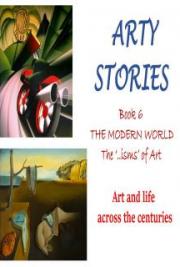References
The title of Eve Sedgwick's work is
specifically related to patterns of conduct relating to the changing images of
masculinity and femininity in the 1980s and 90s. Eve Sedgwick, Tendencies (London:
Routledge, 1994) 1-281.
R. W. Connell, Masculinities (Cambridge: Polity Press,
1995) 122.
[4] Jennifer
Baumgardner and Amy Richards, Manifesta:
Young Womem, Feminism and the Future (New York NY: Farrar, Straus and
Giroux: 200) 18.
[5] Hans Frederick Gude and Adolf Tidemand. Available. Online. http://daap.uc.edu/gallery.html
Accessed 23. 03. 11.
Leonore Davidoff and Catherine
Hall, “The Nursery of Virtue: Domestic Ideology and the Middle Class", in Family Fortunes: Men and Women of the
English Middle Class 1780-1850 (London: Hutchinson: 1987) 149 - 228.
[7]
Edward Smith, William Cobbett: a
Biography (London: L. Sampson Low, 1876).
[8] Michael Harrison has suggested that “the
tedium of home life weighed on all classes” in the period, in a way that was
never allowed to be depicted in a novel.
See Michael Harrison, London by
Gaslight 1861-1911 (London: Peter Davis, 1963) 150.
9
Lang wrote concerning the stories in The
Blue Fairy Book that "the
children to whom and for whom they are told represent the young age of
man." Andrew Lang, The Blue Fairy Book (London: Longmans and
Green, 1899) ix.
[10] For the problems encountered by the collaborative
writer see H.G. Wells, The Problem of the
Troublesome Collaborator: An Account of Certain Difficulties in an Attempt to
Produce a Work of Collaboration and the Intervention of the Society of Authors
Therein (Woking: The Gresham Press, 1930) 9-74. 175 copies printed for private circulation.
[11] Ford
Madox Ford, Joseph Conrad: A Personal Remembrance (Boston: Little, Brown, 1924)
123.
[12]
Terry Eagleton, “From Adorno to Bourdieu” in Ideology: An Introduction (London: Verso, 1991) 125.
[13] For
a working definition of Modernism, see Alan Friedman, The Turn of the Novel (New York: Oxford University Press, 1966)
97-98.
[14] Stevenson. Joint letter with W. E. Henley, 19
February 1885. Bradford A. Booth and
Ernest Mehew, eds. The Letters of Robert Louis Stevenson Vols 1-7 ( Yale University Press, 1995) fn 1 to letter
1395.
Letter from Stevenson to Henley, dated [?5
May 1883], Booth and Mehew, The Letters of Robert Louis Stevenson, Vol
4, 117.
Letter Stevenson to Henley, 15 November
1883, Booth and Mehew, The Letters of
Robert Louis Stevenson, Vol 4,
October 1882-June, 1884. 202.
[17] James to Stevenson. 28 April 1890. Percy
Lubbock ed., The Letters of Henry James (London:
Macmillan, 1920).
Michael Mason, The Making of Victorian Sexuality (Oxford:
Oxford University Press, 1994) 3.
Raphael Samuel, "Mrs
Thatcher's Return to Victorian Values" in T. C. Smout, ed. Victorian Values, A Joint Symposium of the
Royal Society of Edinburgh and the British Academy (Oxford: Oxford University Press, 1992) 1-45.
Lang, "Realism and
Romance", 52: 684.
Stevenson, "A Gossip on Romance" 140; "A Humble Remonstrance", The Works of Robert Louis Stevenson, 33.
James, "The Art of Fiction", 502-21
Rider Haggard, "On Going Back",
Longman's Magazine, XL November, 1887 - April, 1888. 65-66.
[24] Ford
Madox Ford, , letter to Conrad on headed notepaper of The Transatlantic Review from 19 Rue D’Antin, Paris dated 03. 04=.
1924. Unpublished ms. (New Haven, Connecticut:
Yale University Library) n.d.
[25] Niall Ferguson, Empire: The Rise and Demise of the British World and the Lessons for Global
Power (London: Allen Lane, 2003).







